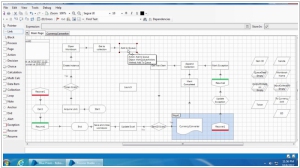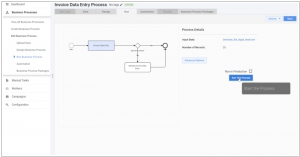Blue Prism vs WorkFusion
June 12, 2023 | Author: Michael Stromann
Blue Prism and WorkFusion are both leading providers of robotic process automation (RPA) solutions, but they have distinct differences in their approaches and capabilities. Here are the key differences between Blue Prism and WorkFusion:
1. Technology and Architecture: Blue Prism is known for its code-free, drag-and-drop RPA platform that utilizes a visual designer and a process automation engine. It follows a centralized, server-based architecture and focuses on automating repetitive tasks and processes. WorkFusion, on the other hand, positions itself as an intelligent automation platform that combines RPA with artificial intelligence (AI) and machine learning. It emphasizes unstructured data processing and leverages cognitive automation for tasks like document understanding, natural language processing, and data extraction.
2. Cognitive and AI Capabilities: WorkFusion places a strong emphasis on cognitive automation and AI. It offers features like machine learning model development, data ingestion, and transformation to enable intelligent automation. WorkFusion's AI-powered bots can process unstructured data and make intelligent decisions, allowing for more advanced automation scenarios. Blue Prism, while it offers some AI capabilities, primarily focuses on traditional RPA and does not have the same level of built-in cognitive automation as WorkFusion.
3. Pre-built Components and Integrations: Blue Prism has a large marketplace of pre-built components, connectors, and integrations with various enterprise systems and applications. This allows for easier and faster integration with existing IT infrastructure. WorkFusion, on the other hand, provides a unified platform that includes components for data ingestion, transformation, and machine learning model development. It focuses more on building end-to-end automation solutions rather than offering a marketplace of pre-built integrations.
4. Scalability and Deployment: Blue Prism is well-known for its scalability and ability to handle large-scale automation projects. It supports a distributed architecture that allows for efficient scaling across multiple machines and environments. WorkFusion also supports enterprise-grade deployments and can scale to handle complex automation scenarios. However, WorkFusion's emphasis on cognitive automation and AI may require additional resources and infrastructure for optimal performance.
5. Market Focus: Blue Prism has a strong presence in industries such as finance, banking, and insurance, where it is widely adopted for back-office automation. It has a broad customer base and focuses on enterprise-level deployments. WorkFusion, on the other hand, targets industries that require automation of complex, data-driven processes, such as healthcare, logistics, and supply chain management.
See also: Top 10 RPA Software
1. Technology and Architecture: Blue Prism is known for its code-free, drag-and-drop RPA platform that utilizes a visual designer and a process automation engine. It follows a centralized, server-based architecture and focuses on automating repetitive tasks and processes. WorkFusion, on the other hand, positions itself as an intelligent automation platform that combines RPA with artificial intelligence (AI) and machine learning. It emphasizes unstructured data processing and leverages cognitive automation for tasks like document understanding, natural language processing, and data extraction.
2. Cognitive and AI Capabilities: WorkFusion places a strong emphasis on cognitive automation and AI. It offers features like machine learning model development, data ingestion, and transformation to enable intelligent automation. WorkFusion's AI-powered bots can process unstructured data and make intelligent decisions, allowing for more advanced automation scenarios. Blue Prism, while it offers some AI capabilities, primarily focuses on traditional RPA and does not have the same level of built-in cognitive automation as WorkFusion.
3. Pre-built Components and Integrations: Blue Prism has a large marketplace of pre-built components, connectors, and integrations with various enterprise systems and applications. This allows for easier and faster integration with existing IT infrastructure. WorkFusion, on the other hand, provides a unified platform that includes components for data ingestion, transformation, and machine learning model development. It focuses more on building end-to-end automation solutions rather than offering a marketplace of pre-built integrations.
4. Scalability and Deployment: Blue Prism is well-known for its scalability and ability to handle large-scale automation projects. It supports a distributed architecture that allows for efficient scaling across multiple machines and environments. WorkFusion also supports enterprise-grade deployments and can scale to handle complex automation scenarios. However, WorkFusion's emphasis on cognitive automation and AI may require additional resources and infrastructure for optimal performance.
5. Market Focus: Blue Prism has a strong presence in industries such as finance, banking, and insurance, where it is widely adopted for back-office automation. It has a broad customer base and focuses on enterprise-level deployments. WorkFusion, on the other hand, targets industries that require automation of complex, data-driven processes, such as healthcare, logistics, and supply chain management.
See also: Top 10 RPA Software




